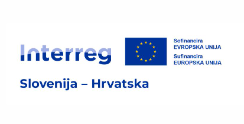Geologija
Goričko ima zanimivo geološko zgodovino, ki se odraža v raznoliki geološki sestavi. Celotno območje tega dela Slovenije sestavljajo pretežno terciarne kamnine, stare med 66 in 1,6 milijona let. Mnogo starejše kamnine, ki so nastajale v morju pred približno 400 milijoni let, se pojavljajo le na območju Sotine in Rdečega brega. Te kamnine spadajo med filitoidne skrilavce. Iz mehkejših terciarnih sedimentov danes izstopajo najbolj strma pobočja severozahodnega dela Goričkega.
Po nastanku starih metamorfnih filitoidnih skrilavcev je območje Goričkega vstopilo v daljše kopno obdobje. Šele ob koncu oligocena, pred približno 23 milijoni let, se je ozemlje začelo pogrezati, zalilo pa ga je Panonsko morje, ki je prišlo z vzhoda. Kopen je ostal le skrajni severozahodni del območja Sotinskega brega. Morje je prekrivalo območje nadaljnjih 18 milijonov let. V pliocenu so se prvotni morski sedimenti (prodi, peski in gline, iz katerih so nastali peščenjak, peščeni glinavec in glinavec) postopoma preoblikovali v sladkovodne. Zaradi dvigovanja ozemlja se je Panonsko morje postopoma umaknilo proti vzhodu.
V zgornjem pliocenu, pred približno 1,6 milijona let, je v bližini Klöcha v Avstriji izbruhnil vulkan. Njegova dejavnost je pustila sledove tudi pri Gradu na Goričkem, kjer se v deloma sprijetih plasteh kremenovega proda, peska, laporja in gline pojavljajo plasti bazaltnega tufa in tufita. Jugozahodno od Kaniže se nahaja črnosiv bazalt. V preteklosti so te kamnine uporabljali kot gradbeni material, danes pa so zaradi vsebnosti olivinovih nodul zanimive z mineraloškega vidika. Nahajališče pri Gradu je namreč edino v Sloveniji, kjer je mogoče najti mineral olivin.
V holocenu je območje zaznamovala akumulacija rečnega sedimenta, kar je povzročilo počasno zniževanje površja. Z geomorfološkega vidika danes Goričko obravnavamo kot "peneplain" – pokrajino, ki je zaradi rečne erozije v sipkih sedimentih tik pred tem, da se spremeni v ravnino.
Goričko je bilo v preteklosti znano po bogatih nahajališčih gline, kar je vplivalo na razvoj lončarstva in opekarstva. Dediščino lončarske obrti na Goričkem si danes lahko ogledamo na Gradu Grad, lončarstvo pa še vedno živi v Pečarovcih in Filovcih.
Več o geologiji Goričkega najdete v knjižici Geološki zakladi Goričkega a, ki jo je leta 2008 izdal Zavod RS za varstvo narave, OE Maribor, avtorica Mojca Bedjanič.








